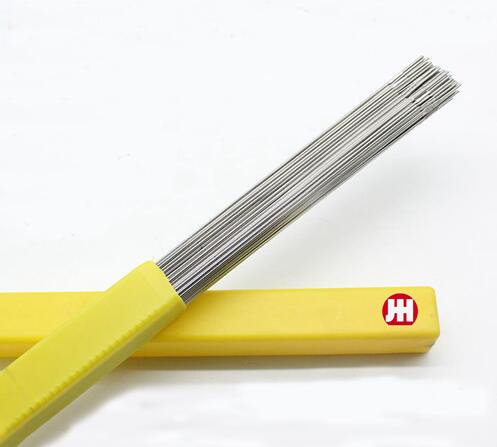Top Suppliers for TIG, MIG, and Stick Welding Equipment and Accessories
Understanding TIG, MIG, and Stick Welding Choosing the Right Supplier
Welding is a vital process in metal fabrication, construction, and repair industries. Among the various welding techniques, TIG (Tungsten Inert Gas), MIG (Metal Inert Gas), and Stick welding (Shielded Metal Arc Welding) are the most commonly used methods. Each of these techniques has its unique applications, advantages, and limitations. When it comes to selecting the right equipment and supplies for these welding processes, choosing a reliable supplier is crucial. This article will explore each welding type and highlight what to consider when selecting a supplier.
Overview of Welding Techniques
1. TIG Welding (Tungsten Inert Gas) TIG welding is known for producing high-quality, precise welds. This process uses a non-consumable tungsten electrode to create the weld. An inert gas, typically argon or helium, protects the weld area from contamination. TIG welding is versatile and can be used for a variety of metals, including stainless steel, aluminum, and copper. It is especially favored in applications requiring clean and aesthetically pleasing finishes, such as in the aerospace and automotive industries. However, it requires a higher level of skill and is generally slower than other methods.
2. MIG Welding (Metal Inert Gas) MIG welding involves feeding a continuous wire electrode through a welding gun, which melts the wire and the base metal to create a weld pool. Like TIG, an inert gas protects the weld from contamination. MIG welding is user-friendly and allows for faster welding speeds, making it ideal for thicker materials and large-scale projects. It is widely used in manufacturing, automotive repair, and construction. However, it may not produce the same quality welds as TIG welding for thin materials or delicate work.
3. Stick Welding (Shielded Metal Arc Welding) Stick welding is a simpler, more portable process that uses a consumable electrode coated with flux. The flux produces a shielding gas when heated, which protects the new weld from oxidation. This method is extremely versatile and can be used on a variety of metals and in outdoor conditions. Stick welding is particularly popular for heavy-duty applications, such as construction and shipbuilding. However, it can produce slag that requires cleanup, which may not meet aesthetic considerations for certain projects.
Choosing the Right Supplier
When selecting a supplier for TIG, MIG, or Stick welding equipment and materials, there are several factors to consider
tig mig stick welding supplier

1. Product Range Look for a supplier that offers a comprehensive range of products, including welding machines, electrodes, filler materials, and protective gear. This variety ensures that you can source everything you need from a single provider, simplifying the procurement process.
2. Quality Assurance Quality is paramount in welding. Ensure that the supplier sources products from reputable manufacturers that adhere to industry standards. High-quality materials lead to better welds, increased safety, and improved durability of the finished products.
3. Technical Support A reliable supplier should provide excellent customer service and technical support. Whether you're a novice or an experienced welder, having access to knowledgeable staff can help you make informed decisions regarding equipment selection and troubleshooting.
4. Competitive Pricing While quality should not be compromised, it’s essential to find a supplier that offers competitive pricing. Some suppliers may offer bulk discounts or loyalty programs, which can significantly reduce costs over time.
5. Reputation and Reviews Research the supplier's reputation within the welding community. Check online reviews and testimonials from other customers to gauge their experiences. A trustworthy supplier is likely to have a positive track record.
6. Training and Resources Some suppliers offer training programs or resources to help improve welding skills. This can be a valuable asset for both individual welders and organizations looking to enhance their workforce's capabilities.
Conclusion
Selecting the right supplier for TIG, MIG, and Stick welding supplies is critical to ensuring successful welding operations. By understanding the differences between these techniques and evaluating suppliers based on product range, quality, support, pricing, reputation, and available resources, you can make an informed choice that meets your welding needs. Whether for personal projects or large-scale industrial applications, the right supplier will empower you to achieve quality results in your welding endeavors.
-
Best MIG Welding No Gas Flux Core Solution – Easy, Portable & Clean WeldingNewsJul.08,2025
-
7018 Welding Rod 3/16 - High Strength, Low Hydrogen Electrodes Wholesale 3/32 Welding Rod 7018 Suppliers & China 7018 AC Welding Rod FactoryNewsJul.08,2025
-
High Quality MIG Aluminium Welding Wire - Wholesale Factory Prices from China SuppliersNewsJul.07,2025
-
High-Quality Gasless Aluminum Welding Wire China Gasless Aluminum MIG Wire SupplierNewsJul.07,2025
-
High Quality Ordinary Welding Rod for Pipes – Reliable China Welding Rod 7016 SupplierNewsJul.06,2025
-
Welding Wire 0.9 mm ER70S-6 Supplier Wholesale Manufacturers & FactoriesNewsJul.06,2025


